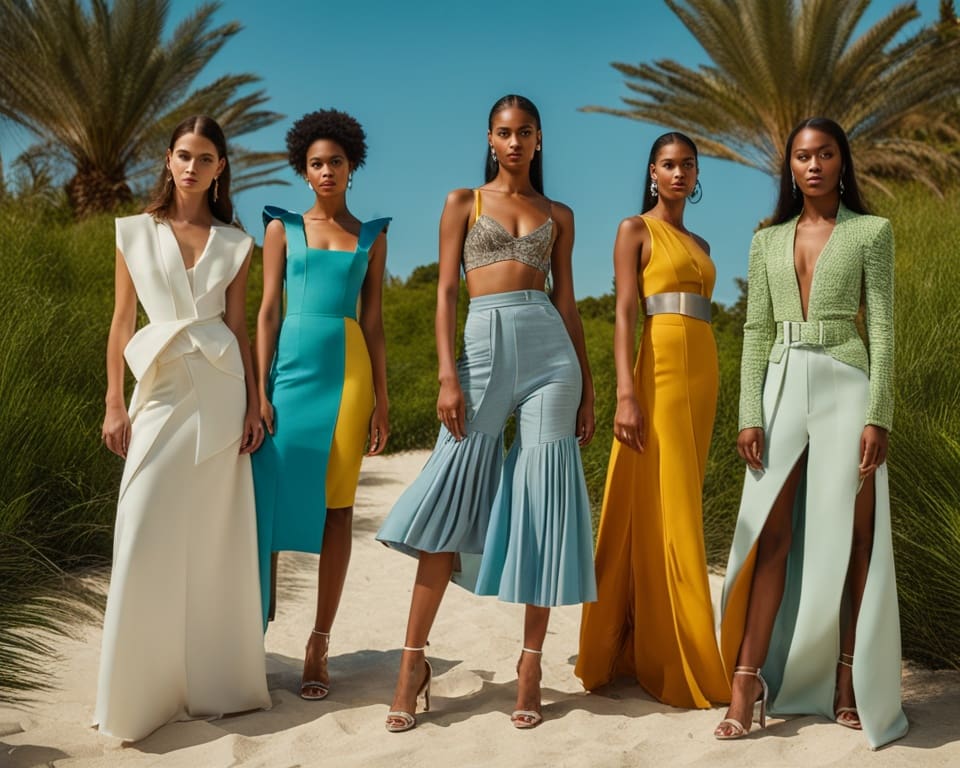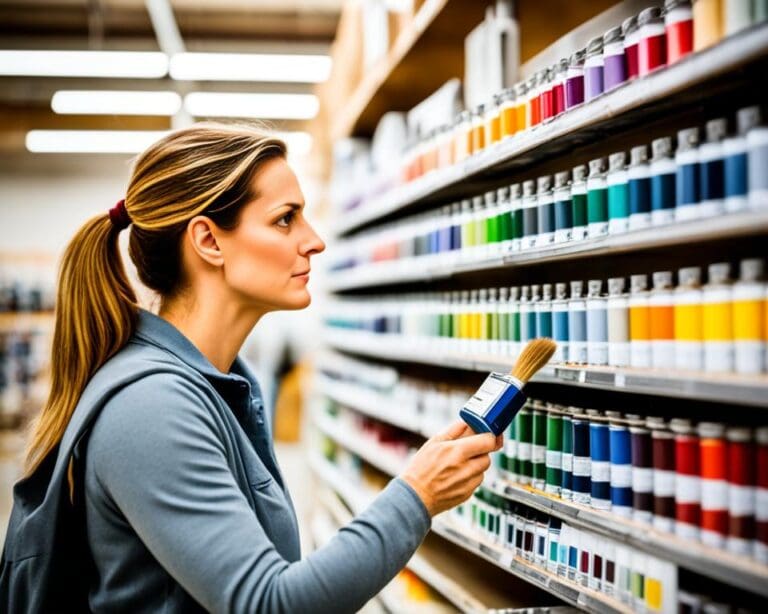The fashion world is standing at a critical moment as 2024 approaches. There’s a strong push for sustainability everywhere we look. Major brands pledge to cut down greenhouse gas emissions significantly. Yet, with 10% to 45% of clothes not sold, it’s clear more work is needed. Innovations are making waves, using materials from food waste, algae, and mushrooms. This is changing fashion for the better.
Consumers are becoming more picky about what they wear. They’re backing the Slow Fashion Movement, which praises ethical making and durability. The EU’s new rules against throwing away unsold clothes help this cause. This law makes it easier for brands to be sustainable. As a result, the fashion industry is leaning towards a more eco-friendly future.
On-demand fashion production and recycling are now big trends. They show the industry’s commitment to reducing waste. Transparency is becoming a must-have in supply chains too. Knowing where and how clothes are made helps in promoting ethical practices.
Understanding Sustainable Fashion and Its Importance
Sustainable fashion is changing how we make and wear clothes. It thinks about the environment, people working on clothes, and moral choices. It aims to reduce harm to our planet. It also supports fair work conditions all over its journey. Consumers now want to know their clothes are made responsibly. Fashion that is kind to our planet helps reduce waste. It also leads to smarter designing.
Definition of Sustainable Fashion
Sustainable fashion looks at the whole life of clothes. It tries to lessen environmental damage. This includes using organic or recycled things, green energy, and making clothes last longer through recycling and upcycling. Fair pay and safe jobs for workers are key. It’s all about being open, so buyers make choices that match their principles.
Consumer Awareness and Impact
More people want sustainable items, willing to spend more for them. This eagerness is changing how brands act. They’re moving towards being more green and ethical. Knowing the impact of what they buy, people seek brands that share their values. This demand for honesty is making fashion more responsible.

Top Trends in Sustainable Fashion for 2024
By 2024, sustainable fashion will have changed a lot. Key trends include the circular economy, on-demand fashion, and eco-friendly materials. Together, they aim to cut down waste and boost sustainability.
Circular Economy and Upcycling
The Circular Economy is crucial in fashion now. It pushes brands to think over their methods. Businesses like Rent the Runway and HURR are leaders in renting clothes, which helps clothes last longer.
Upcycling makes new clothes from old fabric. It cuts down textile waste and offers cool style choices. This not only reduces garbage but also encourages people to choose sustainable options.
On-Demand Fashion Innovations
Old fashion methods produced too much. To fix this, brands now offer clothes made when ordered. Companies like Weekday and Desigual make clothes based on what each person wants.
Technology, like 3D printing used by Unspun, creates clothes from yarn on demand. This lowers waste and helps the industry be more sustainable.
Eco-Friendly Materials on the Rise
In 2024, there will be a big jump in using eco-friendly materials. Designers are shifting to options like organic cotton and plant-based fibers from algae and mushrooms.
Brands such as Stella McCartney lead with innovations like seaweed-based yarn. This shows a strong move towards reducing fashion’s environmental impact.
Legislation and Ethical Manufacturing Practices
The fashion world is changing, with new rules and ethical ways leading the charge. The EU recently introduced laws aimed at making fashion more eco-friendly. These laws focus on being kind to our planet and bringing new, greener ideas to clothes making.
EU Eco-Design Legislation
With the new EU laws, there’s a big no to trashing clothes that aren’t sold. This pushes brands to think differently about how they make clothes. They now have to focus on making clothes that last longer, can be reused, and fixed easily.
This change came because too many new clothes end up being wasted. Reports show that up to 45% of made clothes don’t get sold. So, stopping this waste is crucial for the environment.
Importance of Ethical Supply Chains
Shoppers now prefer to buy from brands that are fair and kind in how they operate. Being open about where and how clothes are made is becoming essential. To build trust, brands are working closely with fair-trade partners and checking how things are done regularly.
Acting ethically isn’t just about following rules; it’s about showing real care for people and the planet. This approach not only boosts a brand’s image. It also paves the way for a fashion industry that everyone can be proud of.
Embracing Innovation: Technology’s Role in Sustainable Fashion
In 2024, technology and fashion come together. They show a promising and deep path toward sustainability. The fashion world, known for hurting the environment, uses new tools like blockchain. This helps us see where our clothes come from. It encourages us to buy wisely and think about our impact.
Smart textiles are changing the game too. These fabrics are smarter thanks to nanotechnology and threads that conduct. Not only do they offer something new for users, but they also help cut down waste. Brands like Patagonia and Stella McCartney lead by using recycled materials. They show how important being open and responsible is in fashion.
On-demand production is growing thanks to 3D printing. It lets brands make what people want without making too much. This reduces waste and shows a united effort towards a greener planet. As tech evolves in fashion, it makes products more appealing. It also pushes the industry to be better for our world.









